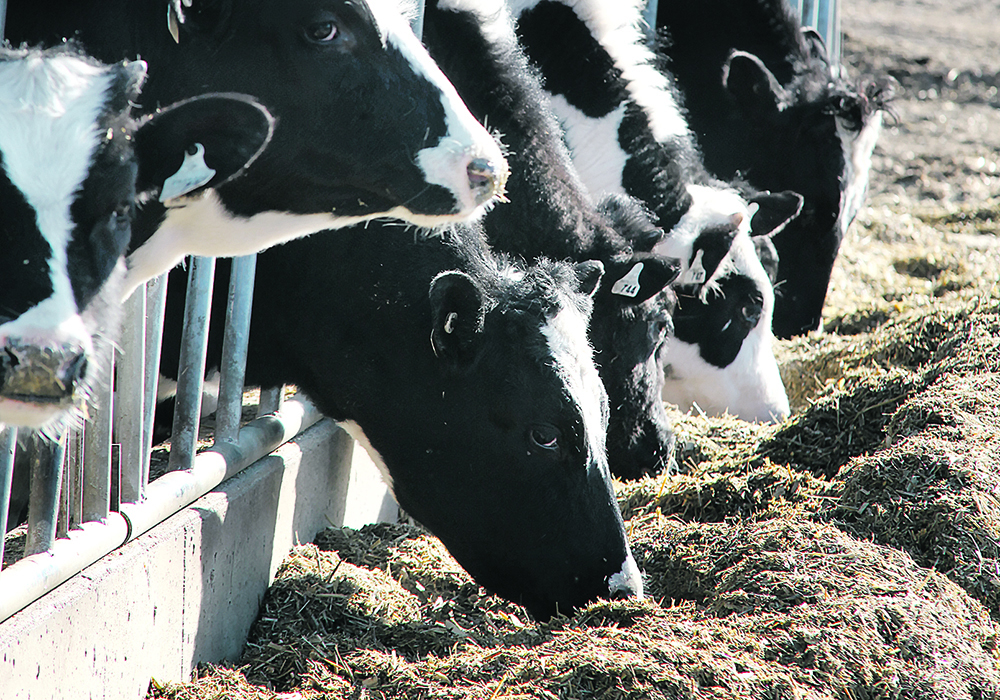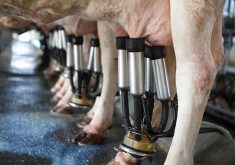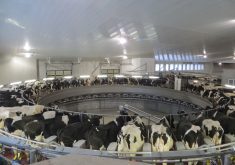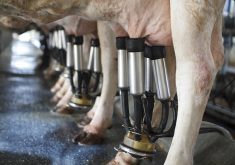Histidine can help maintain milk production for dairy producers trying to decrease nitrogen losses in manure
If dairy cows are fed reduced protein diets to decrease nitrogen losses and ammonia emissions from manure, their milk production can suffer.
However, according to research at Pennsylvania State University, supplementing their diet with the amino acid histidine may help maintain milk production. It may even increase milk and milk-protein yields.
Histidine is essential for protein synthesis, which is the process that helps all types of proteins maintain biological functions and health in humans and animals. But in the process of lowering protein consumption in dairy cows to address emissions, blood histidine concentrations drop significantly. And so can milk production.
Read Also

House ag committee to undertake several studies
The House of Commons standing agriculture committee has set its agenda for the coming months. Members began the fall sitting with a two-hour update on international trade
The relationship between diet and histidine levels came to light in research at Penn State University when experiments showed that blood histidine concentrations dropped when dairy cows were fed reduced-protein diets.
“The initial work began with aiming at reducing ammonia emissions from the manure from dairy cows,” said Alexander Hristov, distinguished professor of dairy nutrition in the university’s animal science department.
“The best way to do this is to reduce total crude protein intake by the cow by decreasing protein concentration in the diet. When feeding these low-protein diets, we noticed a sharp drop in blood histidine concentrations, which led us to think that histidine may be a limiting amino acid for dairy cows fed these low-protein diets.”
Hristov’s research was critical because lactating mammals need large amounts of amino acids to support milk synthesis by the mammary glands.
The most recent study was a meta-analysis that combined the data of multiple studies to find common results and overall trends. According to the report, the analysis was done on data from 17 studies published in peer-reviewed journals from 1999 to 2022.
In addition, five publications reported data from two separate experiments, which were also included in the meta-analysis for a total of 22 studies, which all documented the supplementation of histidine by various forms. The main forages in the dairy cows’ diets were corn silage in 14 studies and grass silage in eight studies.
The research concluded that histidine supplementation of dairy cow diets increased feed dry matter intake, milk yield and milk protein concentration, said Hristov.
He said the increase in milk protein concentration with histidine supplementation was up to four times greater for cows fed lower protein diets.
He added the data showed cows responded better to rumen-protected histidine supplementation when they were fed diets that were supplying metabolizable protein below their requirements.
“Our hypothesis is that this is so because of the relatively low histidine content of microbial protein, which becomes a more important source of amino acids for the cows when the diet is low in protein, i.e., there is less rumen-undegradable protein supplying amino acids to the mammary gland.”
He said in the news release that histidine is unique among the essential amino acids because there are body reserves that can serve as sources of histidine and mask short-term deficiencies.
“Further, microbial protein synthesized in the rumen, which is the main source of amino acids for the cow, is low in histidine relative to other potentially milk-limiting amino acids,” he said. “That supports our hypothesis that histidine becomes the first limiting amino acid when cows are fed low-protein diets. The role of microbial protein as a source of amino acids for milk protein synthesis and body functions becomes even more critical.”
He said that histidine should be supplemented as a rumen-protected histidine product.
“The cow does not need protein, does not need crude protein, and does not need metabolizable protein,” said Hristov. “She needs amino acids for all bodily functions and for milk protein synthesis. Low protein diets are considered, not only because they supply more amino acids but because of the goal of reducing nitrogen losses to the environment and reducing feed costs.
“In some cases, production can be lost by feeding low-protein diets because of decreased dry matter intake, deficiency of rumen degradable protein or rumen undegradable protein, or deficiency of a specific amino acid such as histidine.”
Hristov said research on the value of histidine supplementation and amino acids is continuing and he said they plan to test rumen-protected histidine supplementation in transition cows.
He wrote in the report that formulating diets to include less dietary crude protein and focusing on supplying adequate amounts of digestible essential amino acids have become increasingly important.
The research was published recently in the Journal of Dairy Science.

















